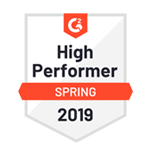Finding qualified candidates is challenging enough. But building diverse, high-performing teams for your clients? That’s where many recruiting firms struggle today.
You’re not alone in this challenge. Research shows that 80% of job seekers consider diversity important when evaluating employers. Yet most recruiting agencies lack structured approaches to inclusive hiring.
This guide will show you practical strategies to strengthen your diversity recruiting efforts. You’ll discover how modern recruitment platforms can streamline inclusive hiring while improving your client outcomes.
What Is Diversity Hiring?
Diversity hiring means recruiting candidates based on merit and skills. You remove bias from your process to give every qualified person a fair opportunity.
This approach goes beyond checking demographic boxes. True diversity includes differences in background, education, experience, problem-solving styles, and perspectives.
Defining Diversity in Recruitment
When we talk about diversity in recruitment, we’re addressing multiple dimensions. Age, race, ethnicity, gender identity, sexual orientation, disability status, and socioeconomic background all matter.
But diversity extends further. Consider communication styles, educational paths, work experiences, and thinking approaches. These invisible differences often drive innovation and creative problem-solving.
Your role as a recruiter involves recognizing this full spectrum. You help clients access talent pools they might otherwise miss.
The Difference Between Diversity and Inclusion
These terms often appear together, but they represent distinct concepts. Diversity answers the “what” question. It reflects who sits at the table.
Inclusion addresses the “how” question. It determines whether everyone at that table can contribute fully and succeed.
Think of it this way: diversity gets people hired. Inclusion keeps them engaged and productive. Your clients need both to build effective teams.
Why DEI Matters for Recruiting Firms?
Your success depends on placing the right talent with the right clients. Diversity and inclusion practices expand your available talent pool significantly.
Companies with diverse leadership teams are 36% more likely to outperform competitors financially. When you help clients build diverse teams, you deliver measurable business value.
This creates stronger client relationships. You position yourself as a strategic partner, not just a transactional service provider.
The Business Case for Diversity Hiring
Understanding the business impact helps you advocate for inclusive practices with clients. The data strongly support diversity initiatives.
Innovation and Decision-Making Benefits
Diverse teams make better decisions up to 87% of the time. Different perspectives challenge assumptions and reveal blind spots.
When your placements bring varied viewpoints to client organizations, those teams solve problems more effectively. They identify opportunities others miss.
This isn’t theory. Studies consistently show that diverse groups outperform homogeneous ones on complex tasks.
Financial Performance and ROI
Companies in the top quartile for ethnic diversity outperform others by 35%. Gender-diverse executive teams show similar advantages.
These aren’t small differences. They represent significant competitive advantages in today’s market.
When you help clients achieve these outcomes, you demonstrate clear return on investment. Your services become strategic investments rather than necessary expenses.
Competitive Advantage in Talent Acquisition
Top talent increasingly prioritizes diversity when choosing employers. About 76% of job seekers consider workforce diversity a critical factor.
If your clients lack diverse, inclusive environments, they lose access to top candidates. Your diversity recruiting efforts help them compete effectively.
You also differentiate your agency from competitors. Firms with strong DEI practices attract better clients and candidates.
Meeting Client Expectations
More organizations now require diversity recruiting as part of vendor relationships. Compliance and ethical considerations drive this trend.
But it goes deeper. Forward-thinking clients understand that diverse teams perform better. They expect their recruiting partners to deliver diverse candidate slates.
Meeting these expectations requires structured processes and the right tools. Traditional recruiting methods often fall short here.
Common Diversity Hiring Challenges Recruiters Face
Let’s address the real obstacles you encounter. Understanding these challenges helps you develop effective solutions.
Unconscious Bias in Screening
Everyone carries unconscious biases. These automatic assumptions influence decisions without your awareness.
During resume screening, bias can emerge quickly. Names, graduation years, employment gaps, and university names all trigger unconscious reactions.
Even experienced recruiters struggle with this. Awareness alone doesn’t eliminate bias effectively.
Limited Diverse Candidate Pipelines
Your existing sourcing channels might not reach diverse talent pools. Traditional job boards and networks often reflect existing industry demographics.
Finding candidates from underrepresented groups requires expanding where and how you search. This takes time and effort.
Many agencies lack relationships with diversity-focused organizations and communities. Building these connections requires intentional investment.
Resistance from Clients
Some clients worry that prioritizing diversity means lowering standards. This misconception creates friction in your recruiting process.
Others fear legal complications or simply prefer familiar hiring patterns. You need strategies to address these concerns effectively.
Education plays a crucial role here. Helping clients understand the business case makes conversations easier.
Measuring DEI Success
What gets measured gets managed. But tracking diversity metrics presents challenges for many recruiting firms.
You need baseline data, consistent tracking methods, and meaningful benchmarks. Without proper systems, demonstrating progress becomes difficult.
Manual tracking takes excessive time. Spreadsheets quickly become outdated and inaccurate.
Building Your Diversity Recruitment Strategy
A structured approach transforms good intentions into measurable results. Here’s how to develop your diversity recruiting strategy systematically.
Step 1: Assess Current State
Start by understanding where you are now. Review your placement data from the past year.
What percentage of your placements represent different demographic groups? How does this compare to available talent pools?
Identify patterns in your sourcing, screening, and selection processes. Where might bias enter your workflow?
This honest assessment reveals your starting point. You can’t improve what you don’t measure.
Step 2: Set SMART DEI Goals
Vague commitments produce vague results. Define specific, measurable, achievable, relevant, and time-bound goals.
For example: “Increase diverse candidate slates by 25% within six months” beats “Improve diversity.”
Your goals should align with your agency’s capacity and your clients’ needs. Stretch yourself without setting impossible targets.
Step 3: Create Your DEI Statement
Document your commitment to diversity and inclusion. This statement guides your team and signals values to clients and candidates.
Include specific practices you’ll implement. How will diversity influence your sourcing, screening, and client relationships?
Share this statement on your website and in client communications. Transparency builds trust and accountability.
Step 4: Establish Accountability Systems
Assign responsibility for diversity initiatives. Someone needs to champion these efforts and track progress.
Review metrics regularly with your team. Celebrate successes and troubleshoot challenges together.
Consider tying incentives to diversity outcomes. What gets rewarded gets repeated.
Practical Diversity Recruiting Strategies
Theory matters, but implementation determines success. These practical strategies work for recruiting firms of all sizes.
Expanding Your Sourcing Channels
Look beyond your usual sources. Partner with historically black colleges and universities, Hispanic-serving institutions, and tribal colleges.
Attend diversity-focused career fairs and networking events. Join professional associations for underrepresented groups in your industry.
Leverage employee referrals strategically. Encourage your team and clients to recommend diverse candidates. Consider referral bonuses for diverse hires.
Use niche job boards that serve specific communities. Examples include Diversity Jobs, PowerToFly for women, and InHerSight.
Writing Inclusive Job Descriptions
Language shapes who applies. Masculine-coded words like “aggressive,” “competitive,” and “dominant” discourage some candidates.
Use gender-neutral language throughout. Tools like Gender Decoder help identify problematic wording.
Focus on essential qualifications only. Research shows women apply when they meet 100% of the listed requirements, while men apply at 60%.
Eliminate unnecessary degree requirements. Skills-based criteria open opportunities for candidates with nontraditional backgrounds.
Highlight your clients’ diversity commitments. Mention employee resource groups, flexible work policies, and inclusive benefits.
Implementing Blind Resume Screening
Remove identifying information before reviewing resumes. Names, photos, addresses, and graduation years can all trigger bias.
Focus purely on skills, experience, and qualifications relevant to the role. This levels the playing field significantly.
Modern recruitment platforms can automate this process. Manual redaction takes too much time for high-volume recruiting.
Structuring Unbiased Interviews
Unstructured interviews amplify bias. Standardize your interview process with consistent questions for all candidates.
Use behavioral interview techniques focused on past performance. Ask every candidate the same core questions.
Involve diverse interview panels when possible. Different perspectives during evaluation reduce individual bias.
Take detailed notes and use scoring rubrics. This creates objective comparison points across candidates.
Using Technology to Reduce Bias
Recruitment technology can either reinforce or reduce bias. Choose tools designed with diversity in mind.
AI-powered platforms can screen candidates based on skills and competencies rather than demographic factors. They evaluate work samples and assessments objectively.
Analytics features help you track diversity metrics throughout your pipeline. You see exactly where candidates from different groups succeed or drop off.
Automation ensures consistent processes. Every candidate receives the same evaluation approach.
How RecruitBPM Supports Inclusive Hiring Practices?
Modern recruitment challenges require modern solutions. Your platform choice significantly impacts your diversity recruiting success.
AI-Driven Candidate Matching
RecruitBPM uses AI to match candidates with opportunities based on skills and qualifications. The system focuses on relevant capabilities rather than demographic information.
This approach surfaces qualified candidates you might otherwise overlook. It expands your effective talent pool automatically.
The AI learns from successful placements to improve matching over time. You benefit from continuously improving recommendations.
Customizable Workflows for Fair Evaluation
You can design workflows that build fairness into every step. Create structured evaluation processes with consistent criteria.
Set up automated blind screening to remove identifying information. Candidates get evaluated purely on merit and qualifications.
Customize fields and forms to track diversity data separately from evaluation processes. This lets you measure outcomes without introducing bias.
Analytics for Tracking Diversity Metrics
Built-in analytics show exactly how diverse candidates move through your pipeline. You see representation at every stage.
Compare your metrics against industry benchmarks. Identify where your process works well and where improvement opportunities exist.
Generate reports for clients demonstrating your diversity recruiting efforts. Data-driven conversations build credibility and trust.
Automated Bias Reduction Features
The platform automates many processes where human bias typically enters. Consistent, systematic evaluation replaces subjective gut feelings.
Resume parsing focuses on relevant qualifications while filtering out irrelevant demographic information. Interview scheduling happens without human intervention.
Communication templates ensure every candidate receives professional, consistent outreach. No one gets overlooked due to unconscious preferences.
Retaining Diverse Talent Beyond the Hire
Your responsibility doesn’t end at placement. Helping clients retain diverse talent strengthens your long-term relationships.
Creating Inclusive Client Environments
Educate clients about retention factors for diverse employees. Inclusive cultures require intentional effort.
Discuss mentorship programs, employee resource groups, and career development opportunities. These elements significantly impact retention.
Share research about what diverse employees value. Flexibility, transparent advancement paths, and psychological safety all matter.
Mentorship and Support Programs
Encourage clients to pair new diverse hires with experienced mentors. This connection helps people navigate organizational culture effectively.
Consider reverse mentoring programs, too. Senior leaders learn from employees with different backgrounds and perspectives.
These relationships increase engagement and reduce turnover. Your clients benefit from more stable, productive teams.
Pay Equity Considerations
Compensation disparities undermine diversity efforts. Help clients conduct regular pay equity audits.
Transparent salary ranges and advancement criteria create trust. Employees understand how to progress in their careers.
When diverse talent thrives at client organizations, those clients return to you for more placements. Success breeds success.
Measuring Diversity Recruiting Success
You can’t improve what you don’t measure. Establish clear metrics to track your diversity recruiting progress.
Key Performance Indicators
Start with these fundamental metrics: diversity of applicant pool, diversity of interviewed candidates, diversity of placements, and retention rates by demographic group.
Track these consistently over time. Look for trends and patterns rather than single data points.
Compare your performance against industry benchmarks when available. This context helps you understand where you stand.
Representation Metrics
Calculate the percentage of placements from various demographic groups. Break this down by role type, level, and client industry.
Compare these percentages to the available talent pool. Are you reaching diverse candidates proportionally?
Identify which positions attract more or less diverse applicants. This reveals where to focus improvement efforts.
Candidate Experience Scores
Survey candidates about their experience with your recruiting process. Ask specifically about fairness and inclusion.
Track response rates and satisfaction scores by demographic group. Differences might indicate problems in your process.
Positive candidate experiences increase referrals and strengthen your reputation. This creates a virtuous cycle of access to diverse talent.
Retention Tracking
Follow up with clients about how your placements perform and remain with the organization. Track retention rates at 90 days, six months, and one year.
Compare retention across demographic groups. Disparities might indicate client culture issues worth addressing.
High retention demonstrates placement quality and strengthens client relationships. It proves your recruiting process works.
Legal Considerations for Diversity Hiring
Navigate legal requirements carefully. Understanding the rules protects you and your clients.
Understanding EEOC Guidelines
The Equal Employment Opportunity Commission prohibits discrimination based on protected characteristics. This includes race, color, religion, sex, national origin, age, disability, and genetic information.
Your diversity efforts must focus on expanding opportunity, not excluding anyone. Document your processes to demonstrate fair treatment.
Familiarize yourself with state and local laws, too. Requirements vary by location.
Avoiding Reverse Discrimination Claims
Choose between equally qualified candidates based on diversity goals. Never select less qualified candidates solely for demographic reasons.
Focus on removing barriers and expanding access. Your goal is to find the best talent from the broadest possible pool.
Document your evaluation criteria clearly. Transparent processes reduce legal risk significantly.
Setting Goals vs. Quotas
Flexible goals are legal. Rigid quotas are not. Aim to increase diverse representation without mandating specific numbers.
Frame goals as aspirations rather than requirements. “We aim to increase diverse candidate slates” differs from “We will hire X people from Y group.”
Consult legal counsel if you’re uncertain. Professional guidance prevents costly mistakes.
Future Trends in Diversity Recruitment
Stay ahead by understanding where diversity recruiting is heading. These trends will shape your work in the coming years.
AI and Automation
Artificial intelligence will increasingly screen candidates and match skills to opportunities. This reduces human bias when implemented thoughtfully.
However, AI can also perpetuate existing biases if trained on historical data. Choose vendors committed to fair, transparent algorithms.
The technology will continue improving. Early adopters gain competitive advantages.
Skills-Based Hiring Evolution
More organizations are eliminating degree requirements for many roles. This opens opportunities for candidates with nontraditional backgrounds.
Skills-based hiring focuses on what candidates can do rather than credentials. Assessment platforms evaluate practical abilities directly.
This shift significantly expands diverse talent pools. People who developed skills through alternative paths can compete effectively.
Global Talent Pool Expansion
Remote work normalizes hiring across geographic boundaries. You can source talent from anywhere.
This naturally increases diversity as you access candidates from different regions and backgrounds. It also intensifies competition for top talent.
Firms that build global sourcing capabilities now will lead their markets tomorrow.
Take Action on Diversity Recruiting Today
Diversity and inclusion in recruitment isn’t just ethical. It’s strategic, profitable, and increasingly necessary.
Start with one or two strategies from this guide. Assess your current state and set specific goals.
Choose technology that supports your diversity objectives rather than hindering them. Your recruitment platform should reduce bias and provide meaningful analytics.
Remember that building diverse talent pipelines takes time. Consistency matters more than perfection. Small improvements compound into significant results.
Your clients need diverse teams to compete effectively. Position yourself as the partner who delivers both quality and diversity.
Ready to transform your diversity recruiting efforts? Discover how RecruitBPM’s AI-driven platform streamlines inclusive hiring while improving placement quality. Schedule a demo to see how automation, analytics, and customizable workflows can strengthen your diversity recruiting outcomes.

















